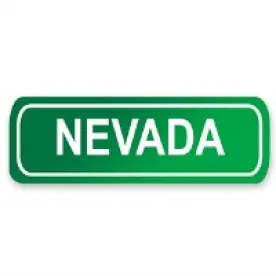Because of a recent Nevada Supreme Court decision limiting the actual notice exception to the pre-lien notice requirement, lien claimants performing offsite work should be cautious and make sure a pre-lien notice is served on the property owner.
Nevada Revised Statute (NRS) 108.245 sets forth the requirements of when a pre-lien notice must be served on a property owner. Under NRS 108.245(1), a lien claimant “shall, at any time after the first delivery of material or performance of work or services under a contract, deliver…a notice of right to lien” to the property owner. A mechanic’s or materialman lien cannot be enforced unless the pre-lien notice is served on the property owner. NRS 108.245(3). If a lien claimant directly contracts with an owner or sells material directly to an owner, then the pre-lien notice is not required. NRS 108.25(5).
Notwithstanding the pre-lien notice requirement, the Nevada Supreme Court has consistently held that the mechanic’s lien statutes are “remedial in character and should be liberally construed, allowing substantial compliance with the statutory requirements as long as the property owner is not prejudiced.” Las Vegas Plywood & Lumber, Inc. v. D &D Enters., 98 Nev. 378, 380, 649 P.2d 1367, 1368 (1982). In accordance with this long-standing rule, the Nevada Supreme Court has previously held that the pre-lien notice requirement is met when the property owner “receives actual notice of the potential lien claim and is not prejudiced.” Board of Trustees of the Vacation Trust Carpenters Local No. 1780 v. Durable Developers, 102 Nev. 401, 410, 724 P.2d 736, 743 (1986). However, the Court recently limited the actual notice exception, as it may not apply to lien claimants performing offsite work, and in particular, may affect architects, which was the case in Iliescu v. Steppan, 133 Nev. Adv. Op. 25 (May 25, 2017).
In Iliescu, the appellants, who were the property owners, entered into an agreement to sell unimproved land for a high-rise condominium development. While in escrow, the prospective buyer negotiated with an architect, Mark Steppan, to design the project. The prospective buyer and Steppan signed an American Institute of Architects (AIA) agreement and Steppan began the design work. AIA provided for progressive billings based on a percentage of completion of five phases of the design work. Steppan completed the schematic design phase, which allowed him to collect 20 percent of the total fee. The prospective buyer did not pay Steppan for his services, and Steppan recorded a mechanic’s lien on the property. Steppan never served a pre-lien notice on the appellants.
Because financing for the project failed, escrow did not close and no onsite improvements were made. The appellants filed an action to be released from Steppan’s mechanic’s lien. The court ruled in favor of Steppan’s lien, finding that even though Steppan failed to give the pre-lien notice, the actual notice exception applied because the appellants had viewed the architectural drawings and attended some of the design team meetings.
The Nevada Supreme Court reversed that decision, holding that the actual notice exception does not extend to offsite work when no onsite work has been performed on the property. The Court noted that the purpose of the pre-lien notice is to protect owners from hidden claims and that knowledge of construction itself should not be sufficient to invoke the actual notice exception. The Court explained that this rationale applies when offsite architectural work is performed pursuant to an agreement with a prospective buyer but no onsite work has been performed, and there is nothing demonstrating that the offsite work benefited the property owner or improved the property. Allowing the actual notice exception to apply under such circumstances would be prejudicial to property owners because they would assume the risk of payment of a prospective buyer’s architectural services for a project that may never be constructed on the property. Also, the property owner may not be able to invoke the disinterested owner doctrine (giving notice of non-responsibility, but this only applies to a property owner that does not directly or indirectly cause the work of improvement). In this case the appellants were not disinterested owners because they indirectly caused the architectural work pursuant to the prospective buyer contract.





 />i
/>i
